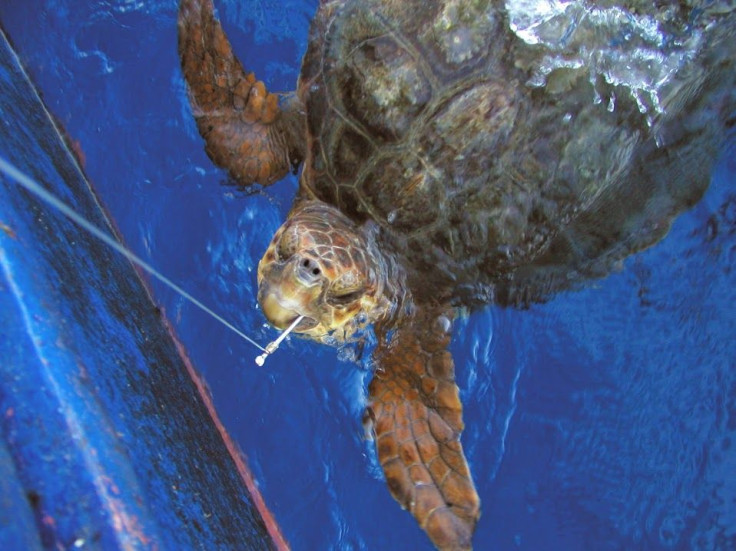Nine US Fisheries Waste ‘Almost Half A Billion Seafood Meals,’ New Oceana Bycatch Report Claims

When fishermen target a specific fish, it’s common for other species to get caught in their nets. This is known as bycatch, and according to a new report released by the nonprofit conservation group, Oceana, it's a growing concern among nine U.S. fisheries.
“Anything can be bycatch,” Dominique Cano-Stocco, campaign director at Oceana, said in a statement. “Whether it’s the thousands of sea turtles that are caught to bring you shrimp or the millions of pounds of cod and halibut that are thrown overboard after fishermen have reached their quota, bycatch is a waste of our ocean’s resources.”
Depending on the type of fishing gear used, fishermen tend to catch everything from dolphins to sea turtles and sharks. These inadvertent catches are usually thrown overboard and tend to be injured, dead or dying.
The majority of bycatch tends to come from open ocean trawl, longline and gillnet fisheries. Researchers estimate that 20 percent of what fishermen catch in the U.S. is thrown away each year. This amounts to 2 billion pounds of wasted seafood.
“The figures are astounding -- four fisheries discard 63 to 66 percent of everything they catch. If you can't quite grasp just how much that is, think of it this way: These nine fisheries waste almost half a billion seafood meals,” actor-board member Ted Danson and Oceana CEO Andrew Sharpless write in a blog post for the Huffington Post.
The nine fisheries are: Southeast Snapper-Grouper Longline Fishery; California Set Gillnet Fishery; Southeast Shrimp Trawl Fishery; California Drift Gillnet Fishery; Gulf of Alaska Flatfish Trawl Fishery; Northeast Bottom Trawl; Mid-Atlantic Bottom Trawl Fishery Atlantic Highly Migratory Species Longline Fishery; and the New England and Mid-Atlantic Gillnet Fishery.
According to the report, the Southeast Snapper-Grouper Longline Fishery is the biggest offender, discarding 66 percent of whatever is caught. In one year, more than 400,000 sharks were caught attached to longlines.
Despite the staggering numbers, the group maintains there's a solution to bycatch.
“The good news is that bycatch is a fixable problem,” Danson and Sharpless write. “We need to accurately count everything that we catch, limit the amount of wasted catch in each fishery using science-based limits, and avoid catching non-target species by using more selective fishing gear.”
Besides benefiting ocean life, reducing bycatch will help fishermen too, Cano-Stocco said. “By eliminating wasteful and harmful fishing practices we can restore and maintain fish populations that are essential to renewed abundance and healthy oceans, while also preventing the deaths of whales, dolphins, seals and sea turtles,” she adds.
© Copyright IBTimes 2024. All rights reserved.












